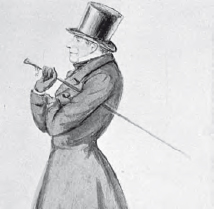Continental PhilosophySøren Kierkegaard |
What were the emotional conditions in Søren Kierkegaard’s life? |
Kierkegaard’s father, Michael, was a very gloomy man who had married a former maid as a second wife. He felt himself under a cloud of God’s wrath and expected punishment through his children predeceasing him—five of them did. The sins of Kierkegaard’s father apparently consisted of his having impregnated his wife before they were married and in cursing God during severe weather as a 10-year-old shepherd. He later became well off as a wool merchant.
Kierkegaard was sickly as a boy, but he could reduce larger boys to tears with his sarcasm and mockery. At the University of Copenhagen, he did not find Hegelianism congenial because it did not address “a truth, which is true for me, to find the idea for which I can live and die.” The religion of Lutheranism did not speak to him, either, and for a while he indulged in expensive food and drink and wore fashionable clothes because he believed that immediate pleasure was the most important thing. But his father’s despair haunted him and became his own.
Kierkegaard was intending to become a pastor when he became engaged to Rigene Olsen in 1841. He had met her when she was 14, three years earlier, and they were deeply in love. But Kierkegaard broke off the engagement, and she subsequently married her tutor, Frederick Schlegel (who became governor of the Danish West Indies). An original life’s path was taking shape for Kierkegaard, and when he decided not to marry he also decided not to become a Lutheran pastor.
Kierkegaard believed that philosophy was neither about system-building nor analysis, but rather the expression of individual existence. He had no respect for professors because he did not think there was any way they could comprehend his subjectivity.
Kierkegaard’s most important works were all written in the 1840s: Either/Or: A Fragment of Life (1843), Fear and Trembling (1843), The Concept of Dread (1844), Philosophical Fragments (1844), Concluding Unscientific Postscript (1846), and The Sickness unto Death (1849). His autobiographical writings and journals shed considerable light on his personal thoughts and feelings. Nonetheless, it was not his intention to disclose everything. He wrote:
After my death no one will find among my papers a single explanation as to what really filled my life (that is my consolation); no one will find the words which explain everything and which often made what the world would call a trifle into an event of tremendous importance to me, and what I look upon as something insignificant when I take away the secret gloss which explains it all.
When Kierkegaard was near death he refused a pastor’s sacrament, remarking: “Pastors are royal officials; royal officials have nothing to do with Christianity.” His epitaph read, as he had requested: “That individual.”

